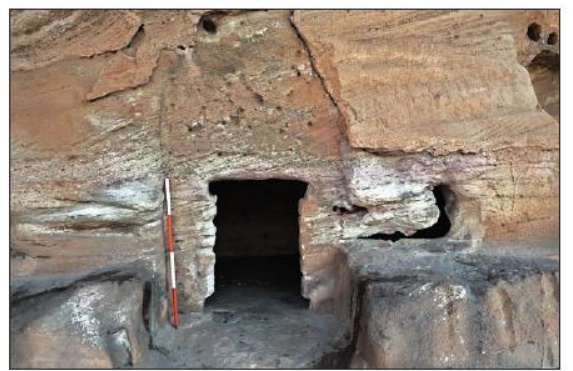Bandhavgarh: ancient history
This is a collection of articles archived for the excellence of their content. |
Archaeological findings
2023: evidence of a “modern society”
Amarjeet Singh1, May 4, 2023: The Times of India

From: Amarjeet Singh1, May 4, 2023: The Times of India
Bhopal: More and more archaeological treasures are being unearthed in Bandhavgarh. For the first time, a rock painting roughly 1,500 years old has been found in the famed tiger reserve in Madhya Pradesh’s Umaria district, along with a 2,000-year-old waterbody and evidence of a “modern society”. The area that we call Bandhavgarh now was most likely part of a trade route, and traders passing this way would take shelter here, ASI superintending engineer, Jabalpur circle, Shivakant Bajpai, who is supervising the explorations, told TOI. “The presence of numerous (man-made) waterbodies suggests a modern society. The waterbodies found this time were made at a height and used for collecting rainwater. They could be roughly 1,800-2,000 years old. Evidence suggests some sort of renovation around 1,000 years ago,” he said.
What’s unique about the rock art is that it was found in a rock-cut cave, Bajpai said. Usually, such rock art is found in natural caves or overhangs. “Rock painting has been found for the first time in the area. It is not a historic-era painting but could be roughly 1,500 years old. The painting is still being studied. It possibly depicts an animal,” Bajpai said.
Eleven rock-cut caves have surfaced during the second phase of exploration in the Tala range of Bandhavgarh. The survey started on April 1 and will continue till June 30.
Last year, ASI had carried out extensive explora- tions in the same range between May 20 and June 27, discovering 26 ancient temples/relics, 26 rock-cut caves, two monasteries, two stupas, 24 inscriptions, 46 statues, 20 scattered remains and 19 water structures.
Unlike the caves discovered last year, which were Buddhist, the 11 found this time were cut out of rocks for dwelling purposes, he added.
“Fifty caves were discovered earlier, 26 were found last year and 11 so far this year. In one cave, holes for using wooden rafts are also found. The caves also reflect some sort of social hierarchy as some are big, some are small and some have distinct features,” Bajpai said.